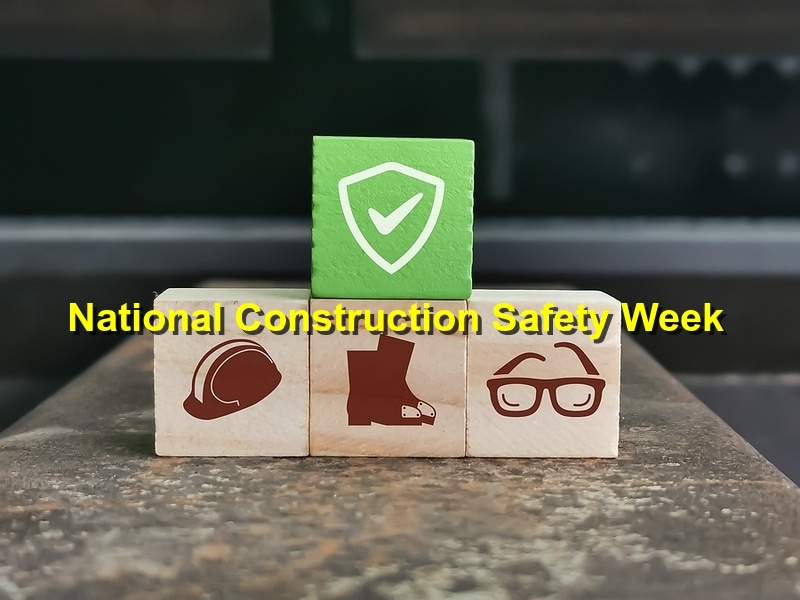National Construction Safety Week, held annually in early June, is a time for contractors, project managers, and construction professionals to spotlight the importance of safety in the workplace. In 2025, the industry continues to evolve, with new tools and technologies designed to prevent injuries, save lives, and improve overall jobsite conditions.
This year’s theme not only emphasizes safety awareness and training but also highlights the cutting-edge innovations transforming how the construction industry approaches health and safety. From wearable tech to smart helmets and AI-powered site monitoring, here’s how safety is being redefined in 2025.
Why Safety Week Matters
Construction remains one of the most hazardous industries globally. According to recent statistics, the majority of work-related injuries in construction are still preventable through better planning, training, and implementation of safety technologies.
National Construction Safety Week serves to:
- Raise awareness about common hazards
- Encourage a culture of proactive safety
- Promote collaboration among teams to ensure everyone returns home safely
It’s not just a campaign—it’s a movement that reflects a deep commitment to every worker’s well-being.
Top 2025 Safety Innovations in Construction
1. Wearable Technology
Wearables have gone mainstream. Devices like smart vests, helmets, and bands track workers’ vital signs, detect falls, and send alerts in real time to site supervisors.
Features include:
- Heart rate and temperature monitoring
- Fall detection sensors
- Proximity warnings for moving equipment
- GPS tracking to ensure worker visibility
Why it matters: These tools help prevent heat exhaustion, fatigue-related accidents, and unreported falls.
2. Smart Helmets and AR Integration
Augmented reality (AR) integrated into smart helmets enables workers to access blueprints, safety checklists, and on-the-spot training modules without leaving the work area.
Benefits:
- Hands-free safety guidance
- Visual hazard identification
- Enhanced situational awareness
2025 Update: Many helmets now come with built-in cameras and voice command features, improving documentation and communication.
3. AI-Powered Site Surveillance
AI-driven camera systems are now being used to monitor construction sites for unsafe behaviors or potential risks in real time.
Capabilities:
- Detecting workers not wearing PPE
- Alerting supervisors to unsafe equipment use
- Analyzing foot traffic and congestion to predict hazards
Bonus: These systems also help streamline compliance reporting and insurance documentation.
4. Drones for Safety Inspections
Drones aren’t just for marketing—they’re becoming essential tools for safe inspections in hard-to-reach or hazardous areas like rooftops, scaffolding, and confined spaces.
Advantages:
- Reduces human exposure to dangerous conditions
- Speeds up inspection times
- Provides detailed imagery for better decision-making
2025 Innovation: Some drones now come with thermal imaging to detect electrical or structural issues invisible to the naked eye.
5. Advanced Training with Virtual Reality (VR)
VR safety simulations give workers hands-on experience dealing with real-world jobsite hazards—without the real-world risks.
Training scenarios include:
- Emergency evacuation drills
- Working at heights
- Electrical safety practices
Outcome: Higher retention of safety procedures and more confidence among workers.
Building a Culture of Safety in 2025
Safety isn’t just about equipment—it’s about people. The most effective companies foster a culture where safety is discussed openly, respected deeply, and practiced consistently.
Keys to a strong safety culture:
- Regular toolbox talks and safety stand-downs
- Encouraging workers to speak up about hazards
- Recognition programs for safe behavior
- Leadership buy-in from the top down
In 2025: Many companies are adopting mental health initiatives and fatigue management tools as part of their broader safety programs, recognizing that well-being extends beyond physical risks.
The Role of Technology and Human Insight
While technology plays a major role in reducing risks, it must be paired with training, communication, and accountability. A smart vest won’t prevent injuries if workers aren’t educated on its use, and AI can’t replace a safety-conscious culture.
Best practices for implementation:
- Provide training for all new tools
- Involve workers in the rollout process
- Use data from safety tech to inform policy changes
Conclusion: Safety Is Everyone’s Responsibility
National Construction Safety Week 2025 is a powerful reminder that every innovation, every conversation, and every small action on the jobsite contributes to a safer industry.
By embracing emerging technologies while reinforcing tried-and-true safety practices, the construction field can reduce incidents and foster a culture where safety is second nature—not just during Safety Week, but every single day.
As we look to the future, one thing remains clear: building safely is building smart.Tools
References: Construction Safety Week, ICS builds




